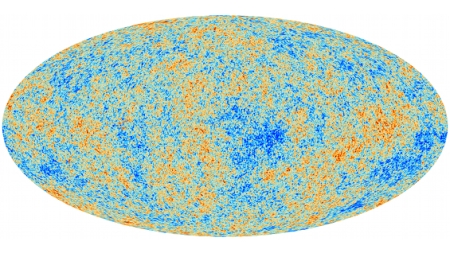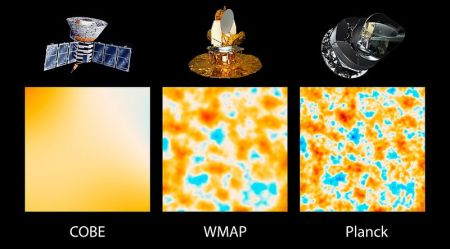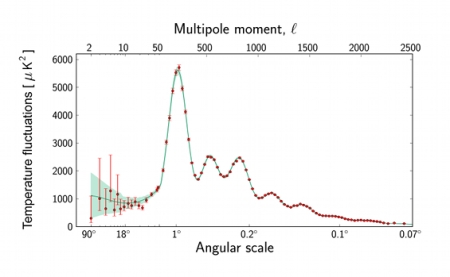EPS-HEP
Today is the first day of the EPS-HEP conference in Stockholm, the largest particle physics conference of the year. In recent years such conferences have been awaited with great anticipation because of the prospects of new results in the latest LHC and Tevatron reports but this year things are a little more subdued. We will have to wait another two years before the LHC restarts and we can again follow every talk expecting the unexpected. Perhaps there will be some surprises in a late LHC analysis or something from dark matter searches, but otherwise this is just a good time to look back and ask, what did we learn so far from the LHC?
Nightmare Scenario
The answer is that we have learnt that the mass of the Higgs boson is around 125 GeV and that this lies near the minimum end of the range of masses that would allow the vacuum to be stable even if there are no new particles to help stabilize it. Furthermore, we do indeed find no evidence of other new particles up to the TeV range and the Higgs looks very much like a lone standard model Higgs. Yes, there could still be something like SUSY there if it has managed to hide in an awkward place. There could even be much lighter undiscovered particles such as those hinted at by some dark matter searches, if they are hard to produce or detect at colliders, but the more obvious conclusion is that nothing else is there at these energies.
This is what many people called the “nightmare scenario” because it means that there are no new clues that can tell us about the next model for particle physics. Many theorists had predicted SUSY particles at this energy range in order to remove fine-tuning and have been disappointed by the results. Instead we have seen that the Higgs sector is probably fine tuned at least by some small factor. If no SUSY is found in the next LHC run at 13 TeV then it is fine-tuned at about the 1% level.
Fine-tuning
Many physicists dislike fine-tuning. They feel that the laws of physics should be naturally derived from a simple model that leaves no room for such ambiguity. When superstring theory first hit the street it generated a lot of excitement precisely because it seemed to promise such a model. The heterotic string in particular looked just right for the job because its E8 gauge group is the largest exceptional simple lie algebra and it is just big enough to contain the standard model gauge group with suitable chiral structures. All they needed to do was figure out which calabi-yau manifold could be stabilised as a compactification space to bring the number of dimensions down from 10 to the 4 space and time dimensions of the real world. They would then see quickly how the symmetry gets broken and the standard model emerged at low energy, or so they hoped.
The problem is that there has been evidence for fine-tuning in nature for a long time. One of the earliest known examples was the carbon resonance predicted by Hoyle at precisely the right energy to allow carbon to form in stellar nucleosynthesis. If it was not there the cosmos would not contain enough carbon for us to exist. Hoyle was right and the resonance was soon found in nuclear experiments. Since then we have realized that many other parameters of the standard model are seemingly tuned for life. If the strong force was slightly stronger then two neutrons would form a stable bond to provide a simple form of matter that would replace hydrogen. If the cosmological constant was stronger the universe would have collapsed before we had time to evolve, any weaker and galaxies would not have formed. There are many more examples. If the standard model had fallen out of heterotic string theory as hoped we would have to accept these fine tunings as cosmic coincidences with no possible explanation.
The Multiverse
String theorists did learn how to stabilize the string moduli space but they were disappointed. Instead of finding a unique stable point to which any other compactification would degenerate they found that fluxes could stabilize a vast landscape of possible outcomes. There are so many possible stable states for the vacuum that the task of exploring them to find one that fits the standard model seems well beyond are capabilities. Some string theorists saw the bright side of this. It offers the possibility of selection to explain fine-tuning. This is the multiverse theory that says all the possible states in the landscape exist equally and by anthropic arguments we find ourselves in a universe suitable for life simply because there is no intelligent life in the ones that are not fine-tuned.
Others were not so happy. The conclusion seems to be that string theory can not predict low energy physics at all. This is unacceptable according to the scientific method or so they say. There must be a better way out otherwise string theory has failed and should be abandoned in favor of a search for a completely different alternative. But the stting theorists carry on. Why is that? Is it because they are aging professors who have invested too much intellectual capitol in their theory. Are young theorists doomed to be corrupted into following the evil ways of string theory by their egotistical masters when they would rather be working on something else? I don’t think so. Physicists did not latch onto string theory just because it is full of enchanting mathematics. They study it because they have come to understand the framework of consistent quantum theories and they see that it is the only direction that can unify gravity with other forces. Despite many years of trying nothing else offers a viable alternative that works (more about LQG is for another post).
Many people hate the very idea of the multiverse. I have heard people say that they cannot accept that such a large space of possibilities exist. What they don’t seem to realize is that standard quantum field theory already offers this large space. The state vector of the universe comes from a Hilbert space of vast complexity. Each field variable becomes an operator on space of states and the full Hilbert space is the tensor product of all those spaces. It’s dimension is the product of the dimensions of all the local spaces and the state vector has a component amplitude for each dimension in this vast multiverse of possibilities. This is not some imaginary concept. It is the mathematical structure that successfully describes the quantum scattering of particles in the standard model. The only significant difference for the multiverse of string theory is that many of the string theory states describe different stable vacuua whereas in the standard model the stable vacuua are identical under gauge symmetry. If string theory is right then the multiverse is not some hypothetical construct that we cannot access. It is the basis of the Hilbert space spanned by the wavefunction.
Some skeptics say that there is no such fine-tuning. They say that if parameters were different then life would have formed in other ways. They say that the apparent finetuning that sets the mass of the Higgs boson and the small size of the cosmological constant is just an illusion. There may be some other way to look at the standard model which makes it look natural instead of fine-tuned. I think this is misguided. During the inflationary phase of the universe the wavefunction sat in some metastable state where the vacuum energy produced a huge effective cosmological constant. At the end of inflation it fell to a stable vaccum state whose contribution to the cosmological constant id much smaller. Since this is a non-symmetrical state it is hard to see why opposite sign contributions from bosons and fermions would cancel. Unless there is some almost miraculous hidden structure the answer seems to be fine-tuned. The same is true for the Higgs mass and other finely tuned parameters. It is very hard to see how they can be explained naturally if the standard model is uniquely determined.
People can complain as much as they like that the multiverse is unscientific because it does not predict the standard model. Such arguments are worthless if that is how the universe works. The multiverse provides a natural explanation for the unnatural parameters of physics. We do noy say that astrophysics is unscientific because it does not give a unique prediction for the size and composition of the Sun. We accept that there is a landscape of possible stellar objects and that we must use observation to determine what our star looks like. The same will be true for the standard model, but that does not stop us understanding the principles that determine the landscape of possibilities or from looking for evidence in other places.
What does it mean for life in the universe?
If the landscape of vacuua is real and the world is naturally unnatural it may take many centuries to find convincing evidence, but it will have consequences for life in the universe. If you think that life arises naturally no matter what the parameters of physics are then you would expect life to take a very diverse range of forms. I dont just mean that life on Earth is diverse in the way we are familiar with. I mean that there should be different solutions to the chemistry of life that work on other planets. On Earth there is just one basic chemistry based on DNA and RNA. This also includes the chemistry of metabolism, photosynthesis and other biochemical processes without which life on Earth would be very different. If we find that all higher lifeforms on other planets uses these same processes then we can be sure that physics is fine-tuned for life. If any one of them did not work there would be no life. Either this fine-tuning must arise naturally from a multiverse or we would have to accept that the existence of life at all is an almost miraculous coincidence. If on the other hand we find complex lifeforms based on molecules unlike DNA and supported by completely different mechanisms then the argument for fine-tuning in nature is weaker.
Theorist Nima Arkani-Hamed recently suggested that it would be worth building a 100 TeV hadron collider even if the only outcome was to verify that there is no new physics up to that energy, It would show that the Higgs mass is fine-tuned to one part in 10,000 and that would be a revolutionary discovery. If it failed to prove that it would find something less exciting such as SUSY. I don’t think this argument will raise the funding required but if the LHC continues to strengthen the case for fine-tuning we must accept the implications.
Update 29-Jul-2013: I am just updating to add some linkbacks to other bloggers who have followed up on this. Peter Woit takes the usual negative view about what he continues to call “multiverse mania” and summarised my post by saying “Philip Gibbs, … argues that what we are learning from the LHC is that we must give up and embrace the multiverse.” To respond, I don’t think that recognising the importance of the multiverse constitutes giving up anything except the failed idea of naturalness ( In future I will always couple the word “naturalnness” with the phrase “failed idea” because this seems to be a successful debating technique ) In particular phenomenologists and experimenters will continue to look for physics beyond the standard model in order to explain dark matter, inflation etc. People working on quantum gravity will continue to explore the same theories and their phenomenology.
Another suggestion we see coming from Woit and his supporters is that the idea that physics may be unnaturally fine-tuned is coming from string theory. This is very much not the case. It is being driven by experiment and ordinary TeV scale phenomenology. If you think that the string theory landscape has helped convert people to the idea you should check your history to see that the word “landscape” was coined by Lee Smolin in the context of LQG. Anthropic reasoning has also been around since long before string theory. Of course some string theorists do see the string theory landscape as a possible explanation for unnaturalness but the idea certainly exists in a much wider context.
Woit also has some links to interesting documents about naturalness from the hands of Seiberg and Wilczek.
Lubos Motl posted a much more supportive response to this article. He also offers an interesting idea about Fermion masses from Delta(27) which I think tends to go against the idea that the standard model comes from a fine-tuned but otherwise unspecial compactification drawn from the string lanscape. It is certainly an interesting possibility though and it shows that all philosophical options remain open. Certainly there must be some important explanation for why there are three fermion generations but this is one of several possibilities including the old one that they form a multiplet of SO(10) and the new one from geometric unity.



 Posted by Phi G
Posted by Phi G 




